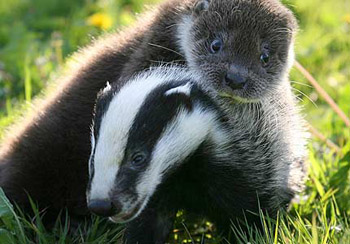Anthropology
Related: About this forumA badger uncovers ’exciting’ Bronze Age cremation site near Stonehenge
A badger uncovers ’exciting’ Bronze Age cremation site near Stonehenge
10:12 / 09-02-2016 | General | Stephanie Armitage, Junior News Editor

An ‘exciting’ Bronze Age cremation site near Stonehenge has been uncovered, by a badger of all creatures.
Artefacts dating from 2,200 – 2,000 BC have been found, including an archer’s wrist guard, copper chisel, bronze saw and cremated human remains.
They were discovered after badgers dug into an ancient burial mound on land belonging to the Ministry of Defence at Netheravon, Wilts., around five miles north of Stonehenge.
Richard Osgood, senior archaeologist from the MOD’s Defence Infrastructure Organisation, said the burial site was “an exciting find”.
He said: “It was utterly unexpected. These are wonderful artefacts from the early Bronze Age, about 2,200-2,000 BC.
More:
http://www.flicwiltshire.com/a-badger-uncovers-%e2%80%8bexciting-bronze-age-cremation-site-near-stonehenge/
[center]


 [/center]
[/center]
OnyxCollie
(9,958 posts)valerief
(53,235 posts)That cracked me up! Why shouldn't it be a badger? ![]()
unc70
(6,118 posts)U.K. Has been "culling" badgers the last few years.
Judi Lynn
(160,611 posts)bluedigger
(17,087 posts)I think a team from William & Mary found a casket handle in ground hog burrow refuse on the surface in the woods during the initial survey for a waste treatment plant. We went back the next year, and identified over 50 burials after we cut down the trees and pulled back the topsoil with a back hoe. We identified European, Black (slave), and Native American interments based on the shapes of the grave shafts.
During the Civil War many county and local governments sent their records and documents to Richmond for safekeeping, which turned out to be ill advised, what with the sacking and burning and whatnot. This cemetery had dropped off the written record, and when the nearby plantation house burned down, been completely forgotten. We surmised that the first settlers had reutilized a local native burial ground and used it for their family and slaves as well. There is no native stone in the area and all the markers were wooden, apparently.